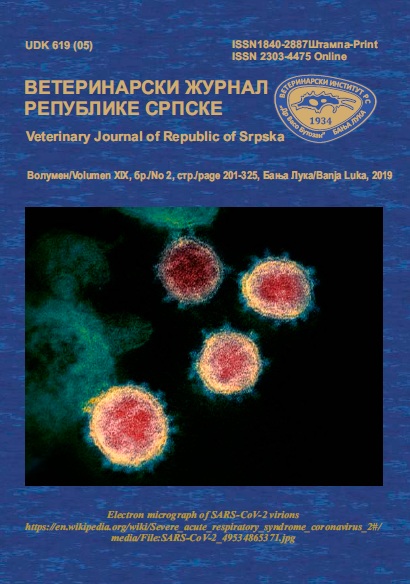ANTIBACTERIAL PROPERTIES OF WHITE LILY (Lilium candidum) EXTRACT
DOI:
https://doi.org/10.7251/VETJEN1902274KAbstract
Natural extracts made from fresh plant material and biologically active compounds isolated from different plant species that have been used in folk medicine for centuries, may present valuable sources for production of novel natural preservatives and medicinal preparations. White lily-Lilium candidum is also used, for a long period of time, in folk medicine for healing of burns and frostbites, otitis and rhinitis as well as balm for washing wounds and cuts. Roots, leaves and flowers have medical properties. Nevertheless, there is little information in literature related to antibacterial effect of white lily extract on certain pathogens and there is a need to determine the justification for its use in traditional medicine. Antibacterial activity of White lily extract on five reference cultures (Escherichia coli WDCM 00090, Listeria monocytogenes WDCM 00020, Salmonella enterica WDCM 00030, Pseudomonas aeruginosa WDCM 00024) and seven bacterial cultures (Escherichia coli, Providencia stuartii, Pseudomonas spp. ß-hemolytic Escherichia coli, coagulase positive staphylococcus, Staphylococcus aureus, group D Sreptococcus) from Laboratory for Microbiology, Public Veterinary Institute of Republic of Srpska "Dr. Vaso Butozan", Banja Luka, were examined in this study. Results confirmed that white lily extract show certain antibacterial activity against examined pathogens used in this study. Antibacterial activity of White lily extract was in the range from 5.33 mm to 18.88 mm depending of bacterial strain and concentration of white lily extract.Downloads
Published
2020-05-03
Issue
Section
Енглески

